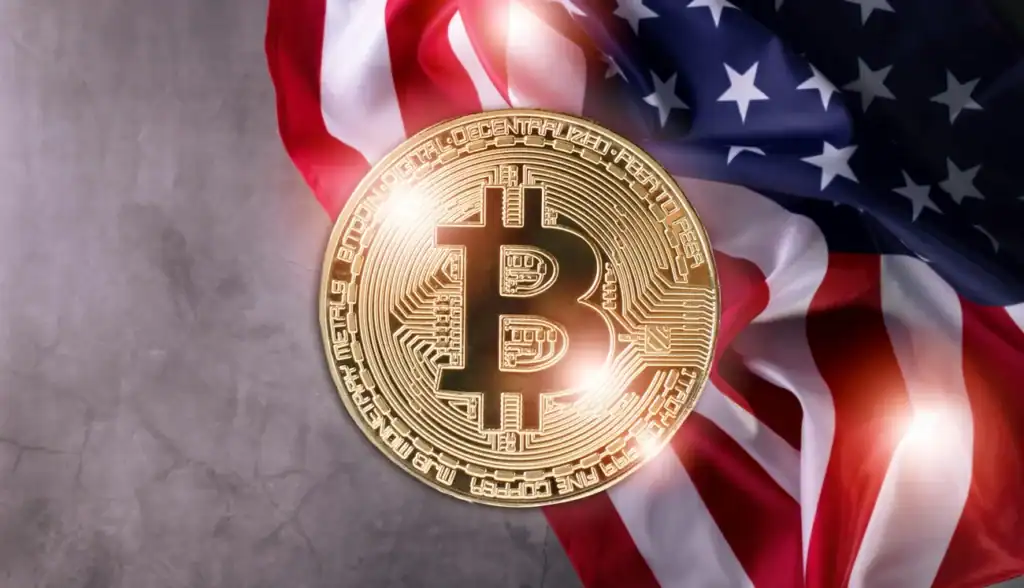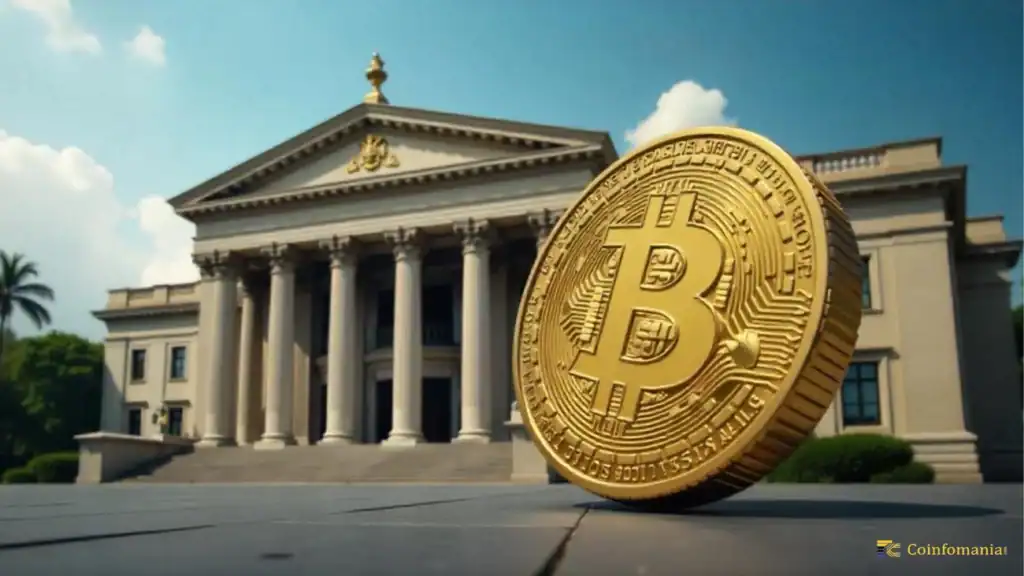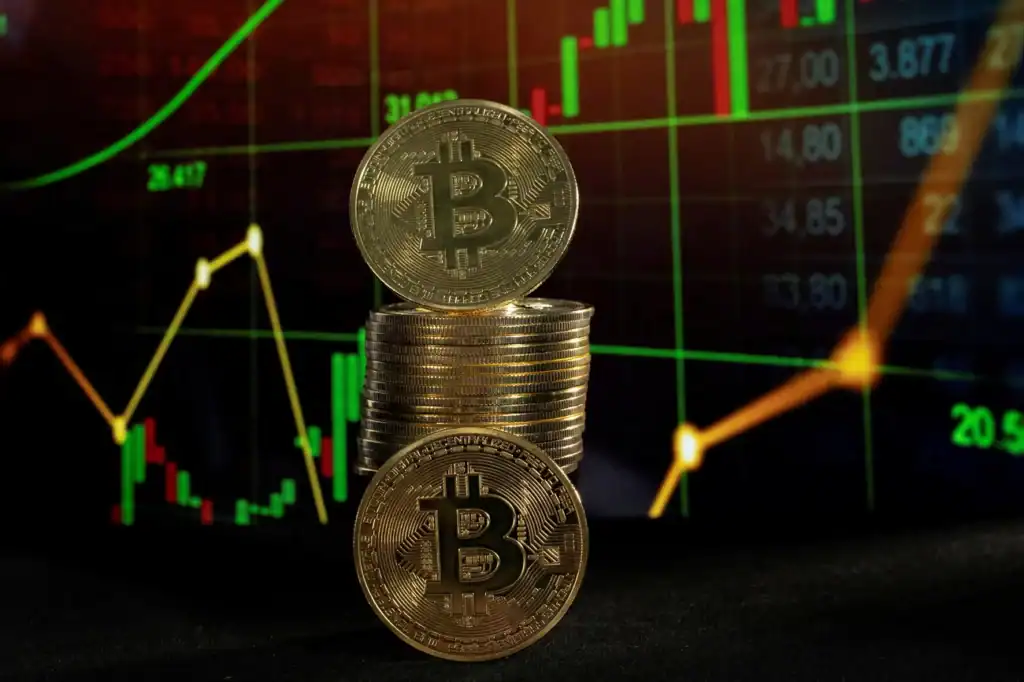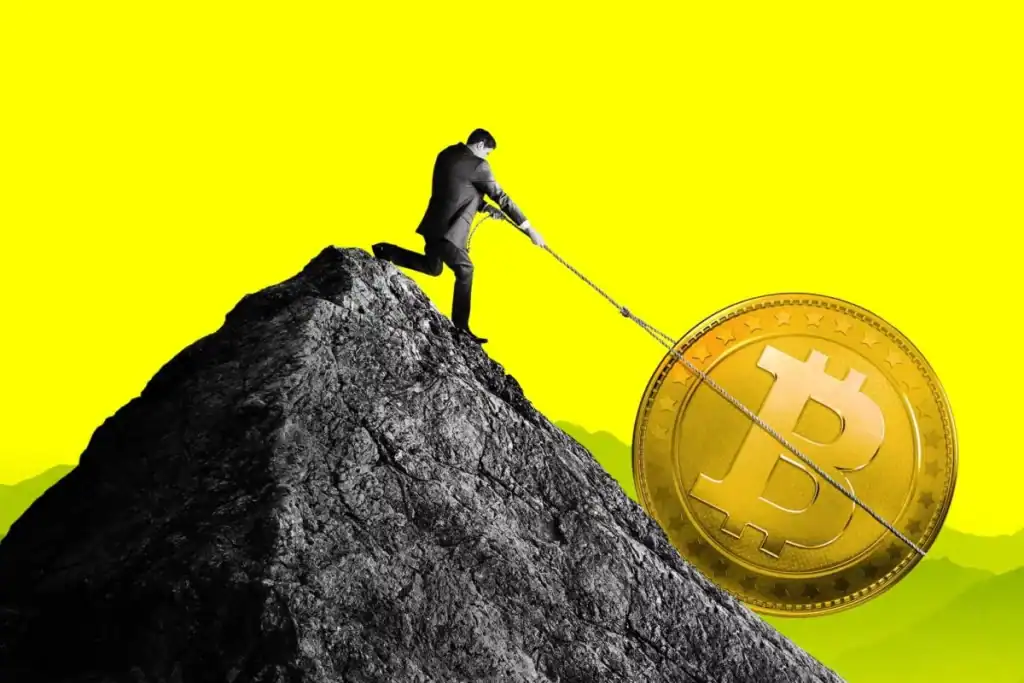The U.S. government stands as the world’s largest state holder of Bitcoin through its Strategic Bitcoin Reserve, which now controls approximately 200,000 BTC. President Donald Trump’s executive order created this reserve on March 6, 2025. This marks a radical alteration in how countries view digital assets.
Our national debt has crossed $35 trillion. The U.S. government now sees Bitcoin as a promising digital reserve currency. The SBR serves as a shield against financial instability. We funded it through Bitcoin seized from criminal and civil forfeitures. The bold BITCOIN Act looks to acquire one million BTC over five years, with four equal portions of 250,000 BTC.
Table of Contents
Bitcoin’s value as a reserve asset comes from its unique properties. The coin’s fixed supply of 21 million makes it an attractive deflationary asset. Bitcoin’s growth has been remarkable. Its value jumped over 1,000% in the last five years, even with historic volatility and drops above 50%.
Let’s get into the Strategic Bitcoin Reserve’s journey from policy to practice in this piece. We’ll learn about its role as a “digital Fort Knox” and what it all means for the economy. The impact shows clearly as all but one of these states have proposed state-level Bitcoin reserve legislation by March 2025.
What Is a Strategic Bitcoin Reserve?
Image Source: CoinFlip.tech
A Strategic Bitcoin Reserve (SBR) is a dedicated collection of Bitcoin that governments, institutions, or corporations hold as a long-term financial safety net rather than a speculative investment37. Unlike regular cryptocurrency holdings, an SBR acts as a well-thought-out economic shield against inflation, currency devaluation, and geopolitical risks.
Definition and difference from corporate bitcoin holdings
A Strategic Bitcoin Reserve works as an economic protection system built for long-term stability. The idea matches traditional reserve assets but employs Bitcoin’s unique features—its fixed supply cap, decentralized nature, and global liquidity—to create a new type of financial backup.
The main difference between government-held SBR and corporate bitcoin holdings shows up in their purpose and scope37. Nations that set up an SBR focus on improving national economic stability and protecting against sovereign currency risks. To name just one example, the U.S. Strategic Bitcoin Reserve, formalized in March 202516, mostly includes bitcoin they got through asset forfeitures and managed to keep as permanent reserve assets that “shall not be sold”16.
Corporate bitcoin treasury strategies work under different rules – they must answer to shareholders37. Companies like MicroStrategy led the way in bitcoin-backed treasury management at the corporate level. They built up over 444,262 bitcoins by December 202438 to make their balance sheets stronger and protect purchasing power. This shows a move from seeing bitcoin as just speculation to calling it a strategic asset that helps companies stay financially strong39.
These strategic reserves give nations several key advantages:
- Protection against currency depreciation: Bitcoin’s fixed supply of 21 million coins helps hedge against currency devaluation31
- Better liquidity options: Bitcoin’s global nature lets reserves move quickly compared to static assets like real estate31
- More economic independence: Countries with weaker currencies can rely less on foreign monetary policies31
Matching gold and petroleum reserves
Strategic reserves aren’t new—they’ve served as vital parts of national security for decades. The U.S. Strategic Petroleum Reserve (SPR) came after the 1973-74 Arab oil embargo to protect against major oil supply problems40. Gold reserves at the United States Bullion Depository work as a traditional value store41.
But a Strategic Bitcoin Reserve stands apart from these old-school reserves. Oil powers our economy as a vital input, while Bitcoin serves a different purpose40. Still, some experts say bitcoin deserves a spot next to gold and oil as a national security asset40.
The numbers tell a clear story. U.S. gold reserves are worth about $789.87 billion, making the U.S. the world’s biggest holder42. The Strategic Petroleum Reserve comes in at roughly $28 billion42. U.S. government-held bitcoin sits at approximately $15.90 billion (with Bitcoin at $79,515 as of March 10)43.
Bitcoin brings unique advantages as a reserve asset. Gold and oil need huge physical storage and transport systems, but Bitcoin moves worldwide in minutes with almost no storage costs43. Gold and foreign exchange usually sit in custodial accounts, but Bitcoin lets nations control their own funds. This reduces dependence on outside institutions that might freeze assets during political conflicts38.
The Strategic Bitcoin Reserve shows how nations are changing their approach to financial security. Trump’s executive order puts it clearly: “Because there is a fixed supply of BTC, there is a strategic advantage to being among the first nations to create a strategic bitcoin reserve”16. El Salvador, Brazil, the Czech Republic, Switzerland, and Germany have started learning about or setting up Bitcoin reserve strategies3844.
This rise of Bitcoin reserves points to a bigger move toward modern finance and economic independence in our digital world37.
Why Governments Are Turning to Bitcoin as a Reserve Asset
Image Source: Coinfomania
Nations worldwide have started learning about Bitcoin as a strategic reserve asset over the last several years. This move toward cryptocurrency reserves comes from Bitcoin’s unique features that make it better than traditional reserve assets like gold and foreign currencies.
Bitcoin’s fixed supply and deflationary nature
Bitcoin’s appeal as a reserve asset stems from its strictly limited supply of 21 million coins31. Bitcoin’s fixed cap makes it naturally resistant to devaluation, unlike government-issued currencies that central banks can create whenever they want4.
Bitcoin has become the digital equivalent of gold—a deflationary balance against inflationary fiat currencies45. The supply/demand curve tips more in Bitcoin’s favor since miners have already produced 19.9 million out of the maximum 21 million coins46.
Bitcoin presents a strong alternative as economies battle inflationary pressures:
- Inflation hedge: The limited supply protects against currency value erosion31
- Value preservation: Bitcoin’s mathematical scarcity prevents the debasement that hurts fiat currencies46
- Financial stability: Bitcoin serves as an alternative reserve asset outside traditional banking systems during economic turmoil31
The unchangeable supply cap creates what economists call a “deflationary” asset that grows in value as demand rises against a fixed supply47.
Decentralization and censorship resistance
Bitcoin’s decentralized structure gives governments another compelling reason to use it as a reserve asset. The network runs without any central control—a feature that builds trust in its neutrality4.
Satoshi Nakamoto, Bitcoin’s creator, stepped away from the project in 2010. They left a system that code and distributed consensus govern4. This lack of centralized control gives Bitcoin remarkable strength against outside pressure.
The decentralized nature creates several strategic advantages:
Bitcoin transactions happen on a worldwide computer network that resists censorship or manipulation48. Nobody can raid a headquarters, pressure a CEO, or target a single point of failure48. Traditional banking systems must follow governmental orders or face consequences—Bitcoin doesn’t have this weakness48.
Bitcoin’s censorship resistance gives governments a new kind of financial freedom they never had before49. The cryptographic security means only those with the right private keys can move or access funds48.
Digital reserve currency potential
Bitcoin looks more like a viable digital reserve currency as trust in traditional money systems drops4. Its market value has grown to about one-sixth of all global gold reserves46. This growth shows Bitcoin’s development into a serious financial asset, now worth more than all the silver in the world.
Countries that add Bitcoin to their reserves get several strategic benefits:
- Financial sovereignty: Less dependence on foreign monetary policies50
- Global financial leverage: They can join an emerging digital economy51
- Geopolitical positioning: They secure a place in what could become the future of international finance52
El Salvador showed what’s possible by becoming the first country to make Bitcoin a treasury asset in September 2021. They now hold more than 5,500 BTC51. President Nayib Bukele says this decision brought more business investment and tourism51.
The risk of “de-dollarization” from cryptocurrency adoption pushes smart governments to build strong Bitcoin positions46. The White House executive order creating the U.S. Strategic Bitcoin Reserve states that “there is a strategic advantage to being among the first nations to create a strategic bitcoin reserve”16.
This advantage goes beyond speculation. Bitcoin reserves could boost public trust in central bank digital currency projects and help traditional banking work alongside blockchain technology47.
Historical Milestones in Strategic Bitcoin Reserve Adoption
The rise of Strategic Bitcoin Reserve adoption has brought amazing changes to both government and corporate sectors. Three game-changing milestones highlight this new financial strategy that changes how institutions handle digital assets.
El Salvador’s legal tender law and BTC accumulation
A major breakthrough in government Bitcoin reserve adoption came in June 2021. El Salvador’s Legislative Assembly passed the “Bitcoin Law” with a strong majority vote of 62 out of 8453. This innovative law made Bitcoin legal tender alongside the US dollar. El Salvador became the first country to lift a cryptocurrency to official currency status54.
President Nayib Bukele led this initiative. About 70% of Salvadorans didn’t have bank accounts, which made Bitcoin a perfect tool for financial inclusion53. The government launched the Chivo wallet and gave users $30 in seed money as an incentive53. The results were impressive. Within a month, Bitcoin wallets outnumbered traditional bank accounts. Three million downloads represented 46% of the population53.
The government started buying Bitcoin on September 6, 2021, with their first purchase of 400 BTC13. By May 2025, El Salvador’s Bitcoin holdings grew to 6,154 BTC14, valued at over $558 million15.
El Salvador’s Bitcoin strategy hit a snag in December 2023. The country got a $1.4 billion IMF loan agreement13. The deal said El Salvador should “no longer accumulate new Bitcoins,” according to the Memorandum of Economic and Financial Policies13. But Economy Minister Maria Luisa Hayem confirmed in April 2025 that “Bitcoin keeps being an important project” and buying more remained a priority14.
MicroStrategy and Metaplanet corporate treasury models
While governments embraced Bitcoin, forward-thinking companies created influential treasury models for Bitcoin reserves. Metaplanet Inc. became Asia’s largest corporate Bitcoin holder, often compared to MicroStrategy’s innovative approach7.
Metaplanet’s aggressive buying strategy showed impressive growth:
- Original holdings: 117 BTC (May 2024)
- Crossed 1,000 BTC milestone: October 2024
- Reached 5,555 BTC: May 6, 20256
Metaplanet spent $414,214,677 at an average price of $90,194 per Bitcoin5. This puts them among the world’s top ten public Bitcoin-holding companies5. The Japanese company aims to get 10,000 BTC by late 2025 and 21,000 BTC by 20265.
Metaplanet follows MicroStrategy’s corporate treasury approach. They see Bitcoin not just as an investment but as protection against inflation and currency devaluation5. This model has inspired other organizations to vary their treasury assets.
Trump strategic bitcoin reserve executive order
The biggest government milestone happened on March 6, 2025. President Donald Trump signed an executive order that created the U.S. Strategic Bitcoin Reserve16. For the first time, Bitcoin became a reserve asset of the United States government17.
The executive order states: “Because there is a fixed supply of BTC, there is a strategic advantage to being among the first nations to create a strategic bitcoin reserve”16. The reserve gets its Bitcoin mainly through civil and criminal asset forfeitures16.
Two key features make this initiative special. The order says deposited Bitcoin “shall not be sold and shall be maintained as reserve assets”16. It also allows the development of “budget-neutral strategies for acquiring additional Government BTC”16.
The U.S. government now holds about 200,000 Bitcoin15, worth around $17 billion17. This makes the United States the largest government Bitcoin holder worldwide18. The Bitcoin Policy Institute says they control between 35% and 40% of all Bitcoin that ever spread18.
Senator Cynthia Lummis paved the way for this order. She introduced the Bitcoin Act in July 2024, asking to move all government-held Bitcoin to the Treasury and create a transparent crypto reserve15.
How the U.S. Strategic Bitcoin Reserve Is Funded
Image Source: Reuters
The U.S. Strategic Bitcoin Reserve uses three different mechanisms to get and maintain Bitcoin holdings without burdening taxpayers. President Trump’s executive order tells officials to create “strategies for acquiring additional Government BTC provided that such strategies are budget neutral”19. This ensures these acquisition methods don’t cost U.S. taxpayers anything.
Seized bitcoin from criminal forfeitures
Seized bitcoin from law enforcement actions serves as the main funding source for the Strategic Bitcoin Reserve. The executive order states that the reserve “capitalized with all BTC held by the Department of the Treasury that was finally forfeited as part of criminal or civil asset forfeiture proceedings”16. The government now uses illegally-obtained cryptocurrency for national benefit instead of selling it.
U.S. law enforcement agencies seized and forfeited over $3 billion in digital assets during 202320. Several agencies contributed to these seizures:
- FBI
- IRS Criminal Investigation
- U.S. Secret Service
- DEA
- Homeland Security Investigations
- U.S. Postal Inspector Service
The 2016 Bitfinex hack recovery added 120,000 Bitcoin to these holdings after authorities caught Ilya “Dutch” Lichtenstein and his wife Heather Morgan21. Treasury Secretary Scott Bessent made it clear that seized assets enter the reserve “after victims are paid”21. This approach maintains justice while strengthening national reserves.
Revalued gold certificates as funding source
Treasury gold certificates offer another innovative funding mechanism. These certificates, backed by physical gold, still carry an official price of $42.22 per ounce from 1973, while gold trades above $3,000 per ounce today12.
Senator Cynthia Lummis’s BITCOIN Act suggests updating these certificates to market value. This could free up $629-700 billion without selling any gold22. The Treasury owns about 261.5 million ounces of gold23, and this accounting change would create substantial funds to buy Bitcoin.
Bo Hines, Executive Director of the Presidential Council of Advisers on Digital Assets, supports this strategy: “One of the ideas gaining traction involves recognizing the full market value of gold-backed certificates that remain priced far below their actual worth”12. The government could buy Bitcoin without new taxes or debt through this method.
Federal Reserve surplus capital allocation
Federal Reserve capital provides the third funding source. The BITCOIN Act suggests using part of the Fed’s Treasury remittances—up to $6 billion annually for five years—to buy Bitcoin22. These remittances come from interest earned on the Fed’s security holdings minus operating costs.
The Act also suggests moving about $4.4 billion from the Federal Reserve System’s capital surplus account to the Treasury’s general fund22. The current surplus stands at $6.8 billion22. Similar transfers have happened before – the 2015 FAST Act limited the Fed’s surplus capital to $10 billion to fund transportation infrastructure22.
These funding mechanisms help build the Strategic Bitcoin Reserve without adding taxpayer burden. Bo Hines puts it simply: “There’s literally countless ways in which you can do this”24. This shows the administration’s steadfast dedication to finding budget-neutral ways to get Bitcoin as a strategic asset.
Storage and Custody: Securing the Bitcoin Reserve
The Strategic Bitcoin Reserve needs advanced protection beyond what traditional assets require. The U.S. government must set up resilient security protocols because it manages digital assets worth billions of dollars.
Multisignature wallet architecture (3-of-5, 5-of-7)
Multisignature technology serves as the life-blood of the Strategic Bitcoin Reserve’s security framework. Standard bitcoin wallets need just one private key for transactions. However, multisignature wallets need multiple authorizations before moving funds. This technology works like a bank vault that opens only with several keys.
The U.S. Treasury will likely use a 3-of-5 or 5-of-7 multisignature scheme for the Strategic Bitcoin Reserve. This setup needs signatures from three out of five or five out of seven authorized parties to complete transactions. The system balances security with operational strength. One security expert noted, “This approach ensures that the loss of a single key wouldn’t compromise funds while preventing overly centralized control”9.
Key distribution among different government roles boosts accountability and security:
- Treasury Secretary (primary oversight)
- Federal Reserve Chair (monetary policy view)
- Director of National Intelligence (security considerations)
- Chief Information Security Officer (technical implementation)
- Independent auditor (compliance verification)
This structure removes single points of failure. The reserve stays secure yet available through remaining authorized signatories if one key becomes compromised25.
Cold storage and geographic key distribution
The Strategic Bitcoin Reserve uses cold storage to maximize security. Private keys stay completely offline where hackers cannot reach them. The federal government’s crypto assets currently sit under various custody arrangements. These often include third-party custodians hired by the Department of Justice and U.S. Marshals Service10.
The move to a formal Strategic Bitcoin Reserve will likely need specialized hardware security modules (HSMs). These devices keep private keys in tamper-resistant environments9. Air-gapped computers that never connect to networks work with these devices to create multiple protection layers against digital threats26.
Geographic distribution adds another security layer. The government spreads key components across different secure facilities throughout the country. This strategy prevents both geographic disasters and coordinated attacks from endangering the entire reserve27. The approach mirrors physical security used for nuclear launch codes—no single location holds all access mechanisms27.
Auditability and blockchain transparency
The Strategic Bitcoin Reserve’s most revolutionary feature lies in its transparency. Bitcoin’s blockchain provides unprecedented verification abilities, unlike traditional gold reserves that need physical audits. Anyone can see every bitcoin transaction on a public ledger.
The Treasury Department will likely run regular Proof of Reserves audits to show continued asset control28. These audits can use cryptographic techniques like zero-knowledge proofs. Such proofs verify ownership without revealing sensitive details about the custody infrastructure27.
The Strategic Bitcoin Reserve would also need “mandated internal controls and periodic auditing of wallet activity, private key management, and access logs”10. This complete audit trail creates accountability while keeping operations secure.
The Strategic Bitcoin Reserve achieves security levels fitting for one of the nation’s most valuable strategic assets. This happens through a sophisticated custody framework that combines multisignature technology, cold storage, geographic distribution, and blockchain transparency.
Legislative Framework and Oversight Mechanisms
The U.S. Strategic Bitcoin Reserve’s legislative framework continues to evolve. President Trump’s executive order on March 6, 2025, created the foundation for this digital reserve system. Congress has worked to establish permanent oversight through formal legislation.
BITCOIN Act provisions and purchase limits
Senator Cynthia Lummis introduced the Boosting Innovation, Technology and Competitiveness through Optimized Investment Nationwide (BITCOIN) Act to create a structured acquisition program2. The legislation allows purchasing 200,000 Bitcoins annually over a five-year period to reach 1 million Bitcoins. This represents about 5% of Bitcoin’s total supply21.
The Act requires purchases to happen “in a transparent and strategic manner to minimize market disruption”2. This careful approach helps prevent price volatility during the acquisition process. The legislation also creates a “decentralized network of secure Bitcoin vaults” under Treasury Department management with strict security protocols29.
The bill funds these acquisitions without taxpayer burden by using $6 billion yearly from Federal Reserve remittances and $4.4 billion from the Fed’s capital surplus account1. Additional funding comes from revaluing Treasury gold certificates and seized cryptocurrencies, as mentioned earlier.
Conditions for liquidation (e.g., debt repayment)
The BITCOIN Act’s life-blood is its 20-year minimum holding period for all acquired Bitcoin2. During this time, “no Bitcoin held in the Strategic Bitcoin Reserve may be sold, swapped, auctioned, encumbered, or otherwise disposed of for any purpose” except possibly retiring federal debt30.
The Treasury Secretary must give recommendations to Congress about keeping or releasing parts of the reserve as the holding period ends2. After the holding period, any liquidation suggestions would be limited to 10% of reserve assets within any two-year period2.
This matches President Trump’s executive order stating that Government BTC in the Strategic Bitcoin Reserve “shall not be sold and shall be maintained as reserve assets”16. The order only allows exceptions to return assets to verified crime victims, support law enforcement operations, or meet specific legal requirements16.
Reporting and audit requirements
The BITCOIN Act creates a detailed “Proof of Reserve” system to ensure transparency and accountability2. This system needs:
- Quarterly public reports showing total holdings, transactions, and proof of private key control2
- Public cryptographic attestation verifying reserve assets2
- Independent third-party audits by cryptographic verification experts2
- Regular oversight by the Comptroller General of the United States2
These requirements start within one year and run for 20 years2. The Treasury Department’s website must publish all reports for public access30.
This legislative framework combines strategic asset building with strict oversight. It shows how nations can responsibly add bitcoin to their sovereign reserves.
Strategic Use Cases for a National Bitcoin Reserve
Image Source: Yahoo Finance
The Strategic Bitcoin Reserve does more than just accumulate assets. Its applications go way beyond the reach and influence of traditional treasury operations. Nations that develop their Bitcoin holdings can use it in three strategic ways.
Collateral for sovereign borrowing
Countries now use their national Bitcoin reserves as collateral for sovereign debt. This helps them get better lending terms4. Static holdings become active financial tools that boost borrowing capacity. The U.S. government—holding approximately $17 billion worth of Bitcoin11—could use these assets to issue bonds or secure international loans.
Bitcoin brings unique advantages compared to traditional collateral. It provides 24/7 market liquidity, faster cross-border transactions, and lower transaction costs31. These features make Bitcoin reserves highly flexible when used as backing for sovereign obligations.
Geopolitical leverage and economic diplomacy
Bitcoin has become crucial to national treasuries and changed how international relations work. Countries with large Bitcoin reserves have more power during economic partnerships and diplomatic discussions4.
The digital world of Bitcoin keeps changing. The U.S. leads in governmental holdings, but China and Russia reportedly build their reserves through less visible channels32. This new “Cold War” for Bitcoin could create different alliances as countries position themselves in the digital asset space.
Bitcoin reserves give countries facing sanctions or financial restrictions a way to reduce their dependence on traditional financial systems32. This explains why Russia and Iran might focus on state-sponsored mining to quietly acquire Bitcoin32.
Diversification among gold and foreign exchange
The Strategic Bitcoin Reserve works well to diversify traditional assets. Recent events show that gold and Bitcoin work together rather than replace each other during crises8. Bitcoin also provides better protection against oil price changes than gold8.
Bitcoin’s investment potential is impressive. It has grown over 10,000% since its creation despite market swings31. This makes it valuable for national reserves. Countries that combine Bitcoin with traditional reserve assets get several benefits:
- Protection against currency depreciation risks through Bitcoin’s fixed supply31
- Better liquidity options than physical assets31
- More economic independence by reducing reliance on foreign monetary policies31
The Strategic Bitcoin Reserve works as both a defensive and offensive financial strategy. It protects domestic purchasing power and enables state-of-the-art strategic influence in the growing digital economy4.
Risks, Criticisms, and Public Debate
Image Source: Webopedia
Bitcoin reserves have gained momentum, but many financial experts, governments, and some cryptocurrency supporters still oppose them.
Volatility and speculative concerns
Bitcoin’s price instability creates a major challenge to its reserve status. The UK Treasury turned down a Bitcoin reserve and pointed to its “historical volatility relative to stable fiat currencies” as the main reason33. European officials share this view and have pushed back against crypto reserves because of “regulatory concerns, price volatility, and potential risks to financial stability”33.
The debate also centers around protecting taxpayers. Four US states—Montana, North Dakota, South Dakota, and Wyoming—rejected Bitcoin reserve proposals. State Investment Officer Matt Clark warned about Bitcoin’s “price unpredictability”34. Many crypto community members also doubt whether volatile digital assets should be part of government portfolios, especially since Bitcoin’s price fell about 20% from its peak this year34.
Potential for political misuse or manipulation
While reserve programs offer benefits, critics warn about political exploitation risks. Some call it the “Trump Pump” and believe it helps political interests more than financial stability35. Billionaire Brian Armstrong has also warned against government bias toward specific cryptocurrencies35.
China’s control of about 58% of Bitcoin mining computing power raises national security concerns36. This concentration lets Chinese-operated mining pools launch “51% attacks,” which could give China effective control over American reserves36.
Cypherpunk skepticism of state-controlled bitcoin
Bitcoin’s strongest supporters often criticize government involvement the most. The cypherpunk movement that formed Bitcoin’s ideological base started specifically to fight “against state control”3. These digital libertarians created cryptocurrency to build “state-independent” economic systems3. They see government reserves as going against Bitcoin’s basic purpose.
Governments looking into digital reserves face an unsolved puzzle: Can an asset made to avoid state control work within traditional government systems?
Conclusion
The Future of National Bitcoin Reserves
A fundamental move in monetary sovereignty has emerged through the Strategic Bitcoin Reserve in our digital age. Nations have progressed from El Salvador’s early adoption to the formalized U.S. approach under the 2025 executive order. This rise shows more than just digital asset accumulation – it demonstrates that Bitcoin has unique properties which traditional reserve assets can’t match.
Bitcoin’s price swings are a big deal as it means that drawdowns have crossed 50%, raising valid questions about taxpayer risk. Notwithstanding that, Bitcoin’s fixed supply and impressive long-term performance make a strong case for strategic allocation. Careful custody arrangements, multisignature security protocols, and transparent blockchain verification mechanisms tackle key operational concerns head-on.
The Strategic Bitcoin Reserve strategy reflects today’s global reality. Countries now compete not just for gold reserves but also for a share of the 21 million Bitcoin that ever spread. Early movers could gain major economic advantages over the next few decades. The BITCOIN Act in Congress puts these efforts into law through systematic buying targets, strict holding rules, and tough oversight mechanisms.
Traditional financial institutions and digital asset supporters will keep debating. Bitcoin’s cypherpunk roots clash with governmental adoption, which creates tension. Practical policymakers now see Bitcoin as an addition to existing reserves rather than a complete replacement.
The Strategic Bitcoin Reserve experiment reveals deep truths about financial development. Gold was humanity’s top store of value for thousands of years before governments made it official. Bitcoin, at just sixteen years old, gets serious attention from global financial authorities. This quick institutional adoption hints we’re at the start of a massive change in how governments envision and handle national wealth for future generations.
FAQs
Q1. What is the Strategic Bitcoin Reserve and why was it established? The Strategic Bitcoin Reserve is a government-held stockpile of Bitcoin, established by executive order in 2025. It aims to position the U.S. as a leader in the cryptocurrency space and provide a potential hedge against economic instability.
Q2. How is the U.S. Strategic Bitcoin Reserve funded? The reserve is primarily funded through seized cryptocurrency assets held by the Treasury, revalued gold certificates, and allocations from Federal Reserve surplus capital. These methods aim to build the reserve without additional taxpayer burden.
Q3. What security measures are in place to protect the Bitcoin Reserve? The reserve employs multisignature wallet technology, cold storage, and geographic distribution of keys. It also utilizes blockchain transparency for auditing, combining cutting-edge digital security with traditional safeguarding methods.
Q4. How can a national Bitcoin reserve be used strategically? A national Bitcoin reserve can serve as collateral for sovereign borrowing, provide geopolitical leverage in economic diplomacy, and offer portfolio diversification alongside traditional assets like gold and foreign currencies.
Q5. What are the main criticisms of establishing a government Bitcoin reserve? Critics point to Bitcoin’s price volatility as a major concern for taxpayers. There are also worries about potential political misuse and manipulation of the reserve. Some Bitcoin purists argue that government involvement contradicts the cryptocurrency’s original purpose of financial independence from state control.
References
[1] – https://begich.house.gov/media/press-releases/icymi-congressman-nick-begich-introduces-bitcoin-act-establish-strategic
[2] – https://www.congress.gov/bill/119th-congress/senate-bill/954/text
[3] – https://medium.com/@cryptofemme/crypto-wars-the-cypherpunk-movement-5c2fa4b7443a
[4] – https://bitcoinmagazine.com/glossary/strategic-bitcoin-reserve
[5] – https://bitcointreasuries.net/entities/metaplanet
[6] – https://treasuries.bitbo.io/metaplanet/
[7] – https://cointelegraph.com/news/metaplanet-surpasses-400-m-bitcoin-holdings-28-m
[8] – https://www.sciencedirect.com/science/article/abs/pii/S030142072300421X
[9] – https://www.jdsupra.com/legalnews/hot-topics-in-international-trade-april-3555770/
[10] – https://www.lawoftheledger.com/2025/04/articles/cryptocurrency/federal-crypto-ownership-compliance-implications-of-the-strategic-bitcoin-reserve-and-u-s-digital-asset-stockpile/
[11] – https://www.investopedia.com/what-s-inside-and-why-it-matters-11718655
[12] – https://cryptoslate.com/trump-administration-exploring-gold-revaluation-to-fund-bitcoin-purchases-bo-hines/
[13] – https://www.forbes.com/sites/digital-assets/2025/03/04/el-salvador-bitcoin-accumulation-is-not-stopping-bukele-reaffirms/
[14] – https://www.tradingview.com/news/cryptonews:bdf49dca4094b:0-el-salvador-continues-bitcoin-accumulation-despite-imf-loan-agreement-economy-minister/
[15] – https://www.aljazeera.com/news/2025/3/4/trump-announces-us-crypto-reserve-what-it-is-and-why-it-matters
[16] – https://www.whitehouse.gov/presidential-actions/2025/03/establishment-of-the-strategic-bitcoin-reserve-and-united-states-digital-asset-stockpile/
[17] – https://www.reuters.com/technology/trump-signs-order-establish-strategic-bitcoin-reserve-white-house-crypto-czar-2025-03-07/
[18] – https://icoholder.com/en/news/u-s-pushes-to-build-national-bitcoin-reserve
[19] – https://www.globalgovernmentfintech.com/trump-strategic-bitcoin-reserve/
[20] – https://www.trmlabs.com/resources/blog/enhancing-law-enforcements-role-in-expanding-the-us-strategic-bitcoin-reserve
[21] – https://www.theverge.com/news/626025/crypto-seized-funds-government-reserve-trump
[22] – https://www.cato.org/blog/tanstaafsbr-or-theres-no-such-things-free-strategic-bitcoin-reserve
[23] – https://thehill.com/opinion/finance/4824059-senator-lummis-proposal-bitcoin-reserve/
[24] – https://coinjournal.net/news/us-mulls-bitcoin-reserves-funded-by-gold-revaluation-and-tariff-income/
[25] – https://cointelegraph.com/explained/multisig-cold-wallets-how-secure-are-they-really
[26] – https://www.braumillerlaw.com/security-for-new-bitcoin-strategic-reserve/
[27] – https://www.linkedin.com/pulse/strategic-bitcoin-reserve-act-passcodes-grant-sernick-0fxdc
[28] – https://www.kraken.com/learn/crypto-strategic-reserves
[29] – https://www.lummis.senate.gov/press-releases/lummis-introduces-strategic-bitcoin-reserve-legislation/
[30] – https://www.lummis.senate.gov/wp-content/uploads/BITCOIN-Act-FINAL.pdf
[31] – https://www.gemini.com/cryptopedia/strategic-bitcoin-reserve
[32] – https://www.forbes.com/sites/tomerniv/2024/12/16/the-cold-war-of-national-bitcoin-reserve-global-race-for-digital-gold/
[33] – https://www.theglobaltreasurer.com/2025/03/11/uk-treasury-rejects-us-style-bitcoin-reserve-citing-volatility-concerns/
[34] – https://www.riotimesonline.com/u-s-states-reject-bitcoin-reserve-proposals-amid-volatility-concerns/
[35] – https://m.economictimes.com/news/international/us/trump-crypto-reserve-backlash-bitcoin-market-reaction/articleshow/118689866.cms
[36] – https://www.americanbanker.com/opinion/a-strategic-bitcoin-reserve-raises-real-national-security-concerns
[37] – https://www.nasdaq.com/articles/what-strategic-bitcoin-reserve
[38] – https://www.forbes.com/sites/digital-assets/2024/12/25/bitcoin-vs-gold-the-new-era-of-reserve-assets/
[39] – https://www.ccn.com/education/crypto/bitcoin-treasury-management-strategy-metaplanet/
[40] – https://www.atlanticcouncil.org/blogs/econographics/what-exactly-is-a-strategic-bitcoin-reserve/
[41] – https://en.wikipedia.org/wiki/Strategic_bitcoin_reserve
[42] – https://tradingonramp.com/bitcoin-reserves-a-comparative-analysis-with-gold-and-oil-reserves/
[43] – https://cointelegraph.com/explained/us-bitcoin-reserve-vs-gold-and-oil-reserves-how-do-they-compare
[44] – https://goldbroker.com/news/central-bank-reserves-bitcoin-versus-gold-3510
[45] – https://www.ccn.com/education/crypto/strategic-bitcoin-reserve-benefits-risks-and-applications/
[46] – https://www.dwt.com/blogs/financial-services-law-advisor/2025/01/strategic-bitcoin-reserve-digital-currency
[47] – https://www.gemini.com/cryptopedia/what-is-a-strategic-crypto-reserve-full-guide
[48] – https://www.ledger.com/academy/topics/economics-and-regulation/4-times-governments-confiscated-money-why-censorship-resistant-money-like-bitcoin-matters
[49] – https://jamesbachini.com/bitcoin-censorship-resistance/
[50] – https://www.forbes.com/sites/digital-assets/2024/07/29/bitcoin-as-reserve-currency-a-new-geopolitical-force/
[51] – https://coinledger.io/learn/us-strategic-bitcoin-reserve
[52] – https://101blockchains.com/strategic-bitcoin-reserves-explained/
[53] – https://en.wikipedia.org/wiki/Bitcoin_Law
[54] – https://en.wikipedia.org/wiki/Bitcoin_in_El_Salvador









